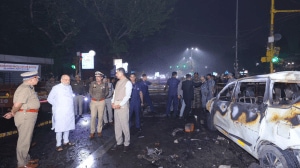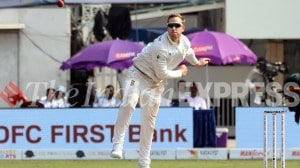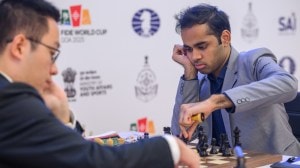Grand Old Moderns
A tome on the Progressives Artists Group is a window to another time.
Modernism,a contentious issue,was coming to the fore in the forties. Linked with it was political independence,it aroused a heated debate centred on identity. In painterly terms,it evoked a strong response. The Progressives Artists Group,formed in Bombay in 1947,rejected outright the revivalist methods of the Bengal School, says Yashodara Dalmia in an essay in Continuum,a new publication on the six Progressives FN Souza,SH Raza,MF Husain,S Bakre,KH Ara and HA Gade.
This voluminous and stylishly produced catalogue accompanies a retrospective of the Progressives at the Delhi Art Gallery (DAG). It includes essays by Dalmia,Yamnin Telkar and Ranjit Hoskote,texts from catalogues,interviews with family members of the artists,and rare photographs,sourced from older catalogues,publications and newspapers. There are Souzas
savage,bold portraits and Husains signature horses; but also rare landscapes by Bakre and abstracts by Gade.
Although they were later to change their minds,the hinterland of India represented,for them,all that was to be left behind; the future lay elsewhere,in the metropolitan centres of the West, says Hoskote of the six artists and their dream of progress and city-driven modernity. These young men may not have transformed themselves so radically,without the gifts of three eastward-bound magi of Central European provenance,answering to the names of Rudolf von Leyden,Walter Langhammer and Emmanuel Schlesinger. Hoskote points out that their European mentors helped transform a group of troubled rebels with the vaguest glimmering of a cause to post-colonial masters.
Krishen Khanna,who has written the forward to the book,says though the Progressives came together as a group,they did not have a single mode of working. Each one was quite different from the other,sharing only a strong distaste for that which masqueraded as art. The art scene at the time was sentimental and limp,with no thought given to the elements of picture making, says Khanna. This statement foregrounds the exclusionary nature of the PAG,for their approach was often to condemn what was not in step with their thinking. But it is also true that contemporary painters like Khanna,Tyeb Mehta and Bal Chabbda,and gallery owners like Kekoo and Khorshed Gandhy,rallied around their manifesto and ideology,to create a stimulating art scene in the 50s.
The photographs are a treat: a sepia photograph of a contemplative Raza,reading and smoking near a window,taken from the La Terre catalogue. Ara is captured in his earthy avatar as he paints in his singlet,his hair pulled back in a rough ponytail. Souza confronts the camera as his works confront the viewer and his smiles always seem sardonic as he poses with mirth and an upraised eyebrow. Bakre appears a dreamy romantic youth staring into the future,while Gade,a bespectacled teacher,certainly does not like the camera.
Finally,there is Husain in a newspaper article,posing on a motorcycle,with bare feet and a stylish swagger. The headline: never apologise,never explain.





- 01
- 02
- 03
- 04
- 05


























